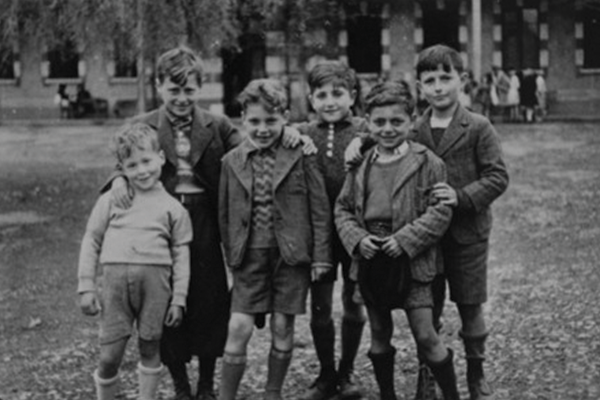Daniella Doron and the History of Jewish Child Refugees

By PhD Candidate Sara Halpern, Department of History
Daniella Doron is a senior lecturer in History at the Australian Centre for Jewish Civilisation at Monash University. She is the author of, among other things, Jewish Youth and Identity in Postwar France: Rebuilding Family and Nation, and currently is working on a book project, Young Border Crossers: Jewish Youth during the Ages of Migration.

Daniella Doron journeyed to Columbus from Monash University in Melbourne (not an Aussie though), where she is a senior lecturer, to share her multifaceted projects relating to the Holocaust, migration and the Jewish family.
Her first talk, “The Buchenwald Boys: Displacement, Trauma, and the Reconstruction in Postwar France,” attracted some forty community members, scholars and students at the Jewish Community Center on January 13, 2020. She discussed the challenges that French Jewish social workers encountered in obtaining trust from their charges, the “Buchenwald Boys,” in summer 1945. The “Buchenwald Boys” comprised a group of some 900 Jewish teenagers who had been sent to the Buchenwald concentration camp in central Germany from different parts of Eastern Europe. They had been kept alive in an isolated barrack managed by a Czech communist. Doron focused on the migration of some 500 boys from Buchenwald to Écouis in the Normandy region of France and how workers from theOeuvre de Secours aux Enfant (Children Aid Society, OSE) attempted to rehabilitate the children from the horrors of Nazi killings in the east. Although trained in social work, education and psychology, the case workers’ expectations did not match with the reality. Even with the return of school and play into their lives, the boys maintained emotional distance from their caretakers. Instead, they bonded with one another over shared memories of the war and anxieties about their families. Their trauma, as the OSE discovered, was beyond its capabilities of “rescue.” The OSE did physically “rescue” the boys from a prolonged stay in Buchenwald but did not have the knowledge to save what scrap of joy was left, as we do today. Doron, concluded that this orphanage was a “laboratory” for healing traumatized child victims of the war and genocide.
On January 15, 2020, in front of a packed room in Dulles Hall on the Ohio State campus, Doron presented her ongoing research on 1,200 Central-European Jewish youth who migrated to the United States during the Nazi regime. In her “Feeling Familial Separation: Nazi Era Refugee Youth in the United States” talk, she shared letters exchanged between children and their parents from different archives and explained how both sides engaged in various degrees of expression and repression of certain emotions. Unlike existing research and films on these youngsters, Doron empowered the children as active agents of their fates in this particular history of children and the Holocaust. For example, children advocated for their parents’ entry to the United States while comforting their parents in Europe. According to Doron, the children utilized “emotional strategies,” being self-aware of emotions and the ways in which they expressed them to others and to themselves, as a means of coping with their migration, family separation and resettlement in the United States with relatives or foster families. While they largely felt tremendous homesickness and desired to go back to Europe to their parents, many appreciated the relative freedom and peace in the United States. Happily, an astonishing number of children eventually reunited with their parents in the United States.
Overall, Doron’s discussion of her research has shown us the migration, mobility, and immobility of emotions that accompanied children in their flight from the horrors of Nazism to safety in Western Europe and the United States.
In addition to her presentations, she met with Holocaust survivors in the area, not only for her research, but more importantly, to be with them and bear witness to their survival and having made it to the United States.
